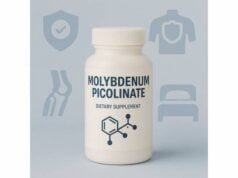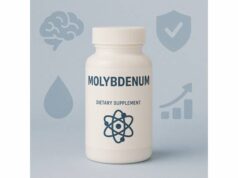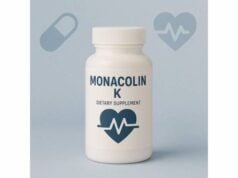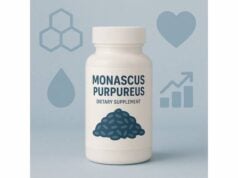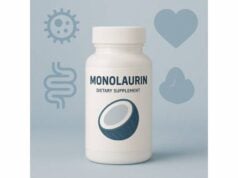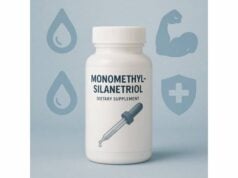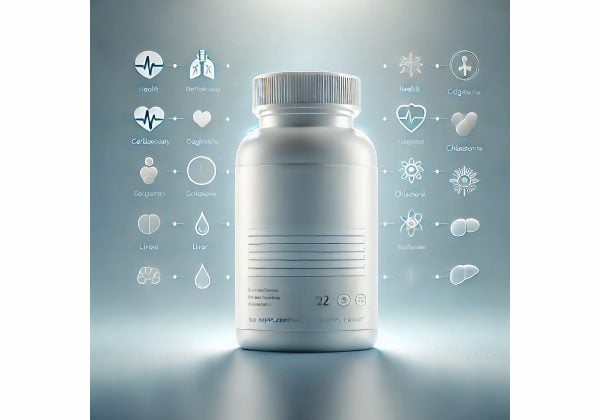
Myricetin is a plant flavonol found in berries, grapes, tea, onions, and red wine. It has attracted interest for its antioxidant and anti-inflammatory activity, as well as research on metabolic, cardiovascular, neuroprotective, and antiviral effects. In cells and animal models, myricetin can modulate pathways linked to oxidative stress and inflammation, help normalize lipid and glucose handling, and interact with proteins central to platelet activation and viral replication. In everyday life, most people obtain small amounts through food; supplemental forms concentrate the compound in capsules, powders, and advanced delivery systems designed to improve absorption. Clinical data in humans remain limited, so myricetin should be viewed as a supportive nutrient rather than a stand-alone treatment. If you decide to use it, pairing a realistic goal (for example, complementing a heart-healthy diet or filling a polyphenol gap) with smart safety checks (drug interactions, bleeding risk) will help you get the potential upside while minimizing downside.
Essential Insights
- May support cardiometabolic health markers and neuroprotective pathways based on preclinical evidence.
- Demonstrates antiviral and antiplatelet actions in laboratory and early in vivo models; human outcome data are limited.
- Typical supplement labels provide 250–500 mg per day; dietary intakes are usually in the low milligram range per day.
- Avoid or use only with medical guidance if you use anticoagulants or antiplatelet drugs, are pregnant, or have upcoming surgery.
Table of Contents
- What is myricetin and how does it work?
- Evidence-based benefits: what myricetin may help
- How to take myricetin: foods, forms, and dosage
- Who should avoid myricetin and key drug interactions
- Common mistakes and how to troubleshoot
- What the research says today: a clear summary
What is myricetin and how does it work?
Myricetin (3,3′,4′,5,5′,7-hexahydroxyflavone) is a naturally occurring flavonol—one of the major subclasses of dietary polyphenols. It occurs as an aglycone (free form) and as glycosides (bound to sugars) in plants. Rich sources include dark berries, grapes, tea, onions, kale, and red wine. In the diet, average daily intake tends to be low (milligram scale), but it varies widely with fruit and vegetable consumption patterns.
At the molecular level, myricetin shows several well-characterized actions in preclinical systems:
- Redox and cytoprotective signaling. It scavenges reactive oxygen species and upregulates endogenous defenses (for example, activating Nrf2-dependent genes like HO-1 and NQO1).
- Inflammation control. It can down-modulate NF-κB and MAPK signaling, reducing expression of COX-2, iNOS, and pro-inflammatory cytokines in stimulated cells and animal models.
- Metabolic support. Studies report effects on AMPK activation, improved insulin signaling, and favorable shifts in lipid metabolism enzymes in models of insulin resistance and fatty liver.
- Enzyme and receptor interactions. Myricetin can interact with diverse protein targets: aldose reductase, xanthine oxidase, kinases in platelet activation cascades, and viral proteases (notably the coronavirus main protease, Mpro) in vitro.
- Protein aggregation and neurobiology. Lab studies show it can interfere with misfolded protein aggregation and preserve synaptic markers in models relevant to neurodegeneration.
Absorption and metabolism shape real-world activity. Like other flavonols, myricetin’s oral bioavailability is limited by poor solubility and rapid first-pass metabolism (glucuronidation, sulfation, methylation). Glycoside forms may be absorbed after hydrolysis by gut enzymes and microbiota. Once in circulation, conjugated metabolites predominate and bind to albumin; the free aglycone is usually a minor fraction. Research teams have explored formulation strategies—phytosomes, liposomes, nanoemulsions—to enhance exposure. These delivery systems can raise plasma levels in animals, but human pharmacokinetic data remain sparse.
From a practical perspective, it is helpful to view myricetin as a multi-target plant bioactive that complements, rather than replaces, foundational lifestyle measures. Its most plausible human-relevant roles lie in supporting antioxidant capacity, tempering inflammatory tone, and contributing to cardiometabolic and cognitive resilience when bundled with a high-polyphenol eating pattern.
Evidence-based benefits: what myricetin may help
Cardiometabolic health. Across cell and animal models of obesity, insulin resistance, and fatty liver, myricetin often improves insulin signaling, reduces hepatic lipogenesis, and lowers inflammatory markers. In endothelial cells and vascular tissues, it supports nitric oxide bioavailability and counters oxidative stress—mechanisms that could translate to blood pressure and vascular function benefits. While these findings are consistent, human trials with isolated myricetin are limited, so any glucose, lipid, or blood pressure claims must be framed as preliminary.
Neuroprotection. Several preclinical studies highlight myricetin’s ability to reduce oxidative injury, modulate kinase pathways linked to tau phosphorylation, and oppose β-amyloid or amylin (IAPP) aggregation. Animal models report improved learning and memory readouts when myricetin is given during or after an insult. Here again, human data are not robust; the signal is promising but needs confirmation through well-controlled trials that include cognitive endpoints, exposure metrics, and safety tracking.
Antiviral mechanisms. Myricetin interacts with the coronavirus main protease (Mpro) and inhibits viral replication in vitro, with structural biology showing covalent binding at the catalytic cysteine. In infected cell systems and inflammatory lung models, it has dampened cytokine surges. These results clarify mechanism and justify medicinal chemistry exploration; they do not imply preventive or curative effects with over-the-counter supplements.
Antiplatelet and vascular effects. In platelet studies, myricetin inhibits aggregation triggered by collagen, thrombin, and thromboxane analogs, acting partly through integrin αIIbβ3 signaling and upstream kinases (PI3K/Akt, MAPKs). In microvessel thrombosis models, it prolonged occlusion time without lengthening bleeding time at tested doses. Such data suggest a biologically meaningful effect on platelet activation pathways that could be relevant in people at high thrombotic risk—but also raises interaction considerations with anticoagulants and antiplatelet drugs.
Dermatologic and enzymatic actions. Myricetin can inhibit tyrosinase and matrix-degrading enzymes in vitro, mechanisms relevant to pigmentation and photoaging pathways. These findings are primarily preclinical; topical formulations have not been standardized, and clinical cosmetic outcomes remain to be shown.
Cancer biology. In cancer cell lines and rodent models, myricetin influences apoptosis, cell cycle, and metastasis-related signaling. Nano-delivery systems can enhance tumor exposure and efficacy in vivo. Translation to human oncology requires rigorous trials; at present, myricetin should not be used as a cancer therapy outside research.
Bottom line on benefits: The strongest current evidence is mechanistic and preclinical. Signals around metabolic, vascular, neuroprotective, antiviral, and antiplatelet effects justify interest, but human-grade evidence is insufficient to claim specific disease benefits. Myricetin fits best as part of a plant-forward diet or as a carefully chosen supplement for general polyphenol support, not as a primary treatment.
How to take myricetin: foods, forms, and dosage
Food first. A practical way to raise myricetin exposure is to eat a polyphenol-rich pattern anchored by berries (blueberries, blackcurrants, cranberries), grapes and grape products, onions and leafy greens, tea, and occasional red wine if appropriate. Because myricetin content varies by cultivar, growing conditions, and processing, build consistency through variety rather than chasing a single “top” source. Two or three servings of colorful produce at both lunch and dinner will typically move daily intake into a range associated with high-flavonol diets.
Supplement forms. Myricetin appears in:
- Standard capsules or powders (aglycone), most commonly 250–500 mg per serving.
- Complexed delivery systems (phytosome, liposomal, nanoemulsion) designed to improve solubility and absorption.
- Blends with quercetin, resveratrol, fisetin, or dihydromyricetin (a related but distinct compound). Read labels carefully to confirm myricetin content versus other flavonoids.
Suggested use. There is no established clinical dose for disease treatment. If you choose to supplement for general support:
- A typical label range is 250–500 mg per day, sometimes split.
- Start at the low end for 1–2 weeks to gauge tolerance.
- Take with a meal (this may reduce gastrointestinal discomfort and aligns with how polyphenols are normally consumed).
- If using an enhanced formulation, follow the product’s serving instructions; these are not directly interchangeable with plain powder due to differing exposure.
Stacking tips. If you already use polyphenol supplements (quercetin, green tea catechins, curcumin), consider your total CYP interaction burden and antiplatelet load. Combining many bioactives with similar targets can magnify both benefits and risks.
Quality and selection. Choose products from brands that provide:
- Third-party testing for identity, potency, and contaminants (heavy metals, solvents, microbes).
- Clear disclosure of myricetin per serving and form (aglycone vs proprietary complex).
- Sensible excipients and vegetarian capsules if preferred.
What results to expect and when. For supportive uses—antioxidant capacity, exercise recovery, general wellness—evaluate over 4–8 weeks alongside diet and sleep improvements. For joint or skin comfort, allow similar timelines; benefits, if any, are incremental and work best with lifestyle changes.
When to pause or stop. Discontinue and seek advice if you notice easy bruising, nosebleeds, unusual fatigue, new rashes, or digestive issues that persist beyond a few days of use.
Who should avoid myricetin and key drug interactions
Situations to avoid or use only with medical guidance
- Anticoagulants or antiplatelet therapy. Laboratory and in vivo data show myricetin inhibits platelet activation. If you take warfarin, DOACs (apixaban, rivaroxaban, dabigatran, edoxaban), clopidogrel, ticagrelor, or aspirin at therapeutic doses, avoid unsupervised myricetin supplementation due to additive bleeding risk.
- Upcoming surgery or procedures with bleeding risk. Stop supplements with antiplatelet potential at least 1–2 weeks beforehand unless your clinician advises otherwise.
- Pregnancy or breastfeeding. There is insufficient safety data for concentrated myricetin supplements; rely on food sources only unless advised by your care team.
- Significant liver or kidney disease. Limited pharmacokinetic data and potential drug interactions warrant personalized oversight.
Drug metabolism and transport considerations
- Cytochrome P450 interactions. Flavonoids, including myricetin, can inhibit CYP3A4 and other drug-metabolizing enzymes in vitro. While the clinical impact from diet is typically modest, high-dose supplements may increase exposure to CYP3A4 substrates (for example, certain statins, calcium channel blockers, immunosuppressants, benzodiazepines). If you take critical narrow-therapeutic-index drugs, discuss myricetin with your prescriber.
- Protein binding. Myricetin and its conjugates bind to human serum albumin and may displace Site I ligands in vitro (warfarin is a classic marker). Clinical significance is unknown, but it reinforces caution with anticoagulants.
- Glucose-lowering medications. Preclinical work suggests improved insulin signaling and insulin secretion; if you use insulin or sulfonylureas, monitor for lower-than-expected glucose when starting any high-polyphenol regimen.
Adverse effects
- Common: Myricetin is generally well tolerated in food amounts. With supplements, mild gastrointestinal upset or headache can occur, particularly on an empty stomach.
- Less common, precautionary: Because of antiplatelet actions, susceptible individuals might experience easy bruising or prolonged bleeding from cuts. Stop use and seek evaluation if these occur.
- Allergy: Rare, but possible with plant-derived products; discontinue if you develop hives, swelling, or breathing difficulty.
Practical safety checklist
- Inventory your medications (especially blood thinners, heart rhythm drugs, transplant immunosuppressants).
- If any are critical or CYP3A4-sensitive, consult your clinician or pharmacist.
- Start low, take with food, and keep a log of any new symptoms for the first two weeks.
- Reassess need every 8–12 weeks; supplements should serve a clear goal.
Common mistakes and how to troubleshoot
Mistake 1: Treating myricetin like a drug.
Myricetin is a supportive nutrient, not a stand-alone therapy. Expect incremental benefits that depend on diet, sleep, exercise, and medication adherence.
Fix: Define one or two realistic goals (for example, increasing flavonol intake alongside a Mediterranean-style plan) and track relevant metrics (resting heart rate, step count, simple cognitive tasks, or validated wellness questionnaires).
Mistake 2: Confusing myricetin with dihydromyricetin.
Dihydromyricetin (ampelopsin) is a related flavanonol with different pharmacology and clinical signals.
Fix: Read labels; verify the active compound name and per-serving amount. Do not assume data on one applies to the other.
Mistake 3: Stacking many polyphenols without considering interactions.
Layering quercetin, resveratrol, green tea catechins, and myricetin may increase the chance of CYP3A4 inhibition or antiplatelet synergy.
Fix: Limit to one or two primary polyphenols at labeled doses. If you add myricetin, reduce or pause other overlapping agents and reassess.
Mistake 4: Ignoring product quality.
Unverified supplements risk low potency or contamination.
Fix: Choose brands with third-party testing (for identity, potency, heavy metals, and microbes). Prefer products that disclose raw-material source and the exact myricetin content, not just “polyphenols.”
Mistake 5: Expecting topical or cosmetic outcomes from oral capsules.
Enzyme inhibition in a dish (for example, tyrosinase) does not guarantee visible skin effects after oral intake.
Fix: For cosmetic goals, focus on sunscreen and proven skincare; treat myricetin as a general antioxidant adjunct at best.
Mistake 6: Taking on an empty stomach and blaming the ingredient.
Some users report queasiness with polyphenol supplements taken fasted.
Fix: Take with a meal, split the dose, or switch to an enhanced-delivery product with better tolerability.
Troubleshooting quick guide
- Mild GI upset: Reduce dose, take with food, or switch formulations.
- Bruising or nosebleeds: Stop immediately and consult a clinician, especially if on blood thinners.
- No perceived benefit after 8–12 weeks: Re-evaluate goals, diet quality, and sleep. Consider discontinuation or trying a dietary-first strategy.
What the research says today: a clear summary
Consistency of mechanisms. Independent groups continue to document antioxidant, anti-inflammatory, metabolic, antiplatelet, and antiviral actions of myricetin in vitro and in animal models. For antiviral research, structural and biochemical studies clarify how the molecule engages the coronavirus main protease. In vascular biology, platelet studies map effects on integrin signaling and kinase cascades. These coherent mechanisms support biological plausibility.
Human evidence gap. Despite strong preclinical momentum, well-designed human trials using isolated myricetin remain scarce. Some studies reference multi-polyphenol blends or closely related compounds, which cannot be cleanly extrapolated. Priority needs include pharmacokinetic work in humans (to define exposure to parent and conjugates), dose-finding, safety at typical supplement levels, and trials with validated endpoints (glycemic control, endothelial function, cognitive measures).
Bioavailability is the gatekeeper. Oral exposure to the aglycone is limited. Strategies like phytosome or nanoemulsion delivery may improve systemic availability, but standardized methods and head-to-head human PK data are needed to judge real-world relevance. Until then, food patterns rich in flavonols remain the most robust path to sustained exposure.
Safety outlook. Food-level intake is considered safe for most people. Concentrated supplements are also generally well tolerated, yet antiplatelet activity and potential CYP3A4 inhibition warrant caution in specific populations. Albumin binding and displacement effects are observed in vitro; while clinical impact is uncertain, they reinforce conservative use with anticoagulants and highly protein-bound drugs.
Practical stance for 2025.
- Use dietary myricetin (and other flavonols) as part of a colorful, plant-forward pattern.
- If supplementing, choose modest doses (often 250–500 mg per day), monitor for interactions, and reassess need regularly.
- View claims about disease outcomes as hypothesis-generating, not prescriptive, until large, controlled human trials report.
References
- Unlocking the Pharmacological Potential of Myricetin Against Various Pathogenesis 2025 (Review)
- Recent studies on myricetin and its biological and pharmacological activities 2023 (Review)
- Myricetin Inhibits SARS-CoV-2 Viral Replication by Targeting Mpro and Ameliorates Pulmonary Inflammation 2021 (In vitro and in vivo)
- Flavonoids as CYP3A4 Inhibitors In Vitro 2024 (Review)
- Myricetin as a promising inhibitor of platelet fibrinogen receptor in humans 2023 (In vitro and in vivo)
Medical Disclaimer
This article is for informational purposes only and is not a substitute for professional medical advice, diagnosis, or treatment. Always talk with your physician or pharmacist before starting any new supplement, especially if you are pregnant, breastfeeding, scheduled for surgery, have a medical condition, or take prescription medications. Never ignore professional medical advice because of something you have read here.
If you found this guide useful, consider sharing it with a friend or on Facebook, X (formerly Twitter), or your preferred platform, and follow us for future evidence-based updates. Your support helps us continue creating high-quality, people-first health content.

